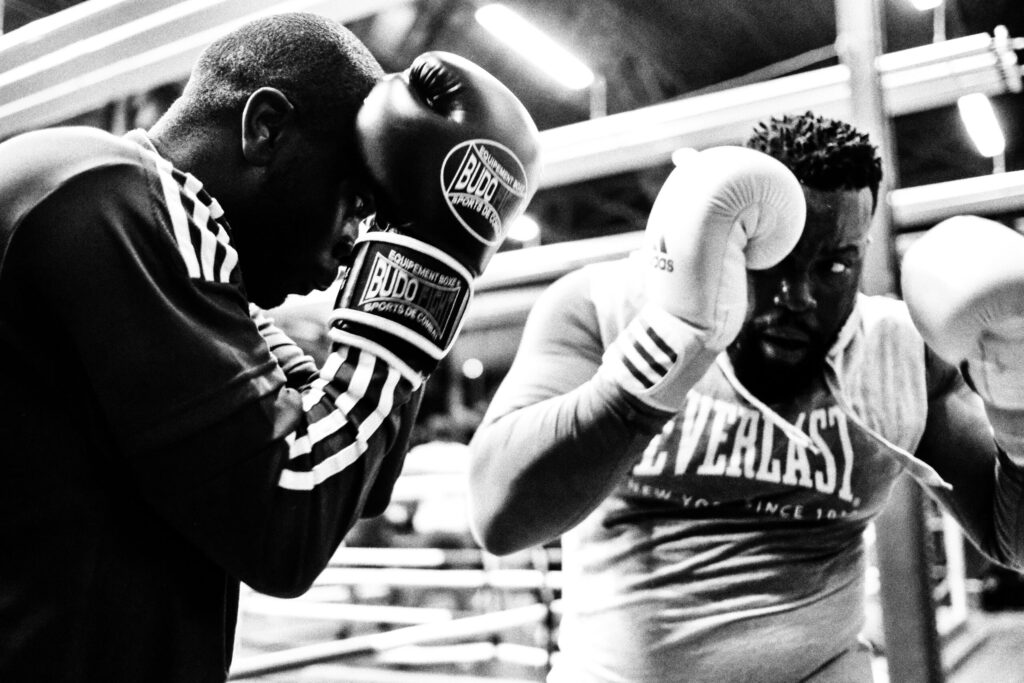Unlocking the Power of Mindfulness in Athletic Performance

Unlocking the Power of Mindfulness in Athletic Performance
In the quest for athletic excellence, athletes often find themselves riding the waves of physical training, nutrition, and mental fortitude. Yet, one element that frequently goes overlooked—often relegated to the realm of yoga studios and meditation circles—is the power of mindfulness. As I’ve observed over the years, true performance enhancement may very well lie within the quiet moments of mental clarity rather than the clamor of competition.
But what exactly is mindfulness, and how can it be applied to athletic performance? To put it simply, mindfulness is the practice of being present in the moment, focusing on one’s thoughts and feelings without judgment. This might sound a tad abstract, but trust me, it’s as practical as it gets for athletes looking to maximize their potential.
The Science Behind Mindfulness and Performance
Research has shown that mindfulness can lead to improved focus, reduced anxiety, and enhanced resilience—qualities that are essential for any athlete, whether they’re a weekend warrior or vying for Olympic gold. A study published in the journal Psychology of Sport and Exercise found that athletes who practiced mindfulness reported lower levels of anxiety and higher levels of self-confidence. This correlation between mindfulness and enhanced performance is not just fluffy talk—it’s backed by science.
When athletes engage in mindfulness practices, they often experience a shift in their mental landscape. You see, during a race or a match, mental distractions can lead to missed opportunities, mistakes, and ultimately, defeat. By fostering mindfulness, athletes can learn to refocus their attention, allowing them to stay in the moment and respond to the demands of their sport more effectively.
Mindfulness Techniques for Athletes
Alright, let’s get into the nitty-gritty of it all. Athletes can adopt various mindfulness techniques to help unlock their performance potential. Here are a few that I’ve come across during my years in the field:
- Breath Awareness: This is the cornerstone of mindfulness practice. By simply focusing on one’s breath, athletes can ground themselves and find calm amid the chaos of competition. The beauty of breath awareness is that it can be done anywhere—whether on the starting line or during a timeout.
- Body Scan: This technique involves mentally scanning the body for tension and discomfort. Athletes can use this practice to identify areas of tightness that may hinder performance. It’s like a tune-up for the mind and body!
- Visualization: Picture this: an athlete visualizing every aspect of their performance, from the sound of the starting gun to the sensation of crossing the finish line. Visualization not only prepares the mind for the task but also enhances the body’s reaction to it.
- Mindful Movement: This could be anything from yoga to tai chi. The idea is to integrate mindfulness into physical activity, creating a harmonious connection between the mind and body. It’s about becoming aware of how each movement feels, which can be transformative for an athlete.
Real-World Applications: Success Stories
Now, let’s sprinkle in some real-world examples to bring these concepts to life. I recall a conversation with a coach who led a successful collegiate rowing team. He mentioned that incorporating mindfulness practices into their training regimen significantly improved their teamwork and synchronization. The athletes learned to communicate more effectively, not just with each other, but with themselves. This shift in awareness led to a remarkable season.
Another striking example is the story of a professional golfer who turned to mindfulness after struggling with performance anxiety. By practicing mindfulness techniques, he transformed his mental game, leading to a major championship victory. He shared with me that the key was learning to focus on each stroke, rather than worrying about the outcome of the tournament. It’s a classic case of mind over matter—literally.
Mindfulness in High-Pressure Situations
High-pressure situations can be the Achilles’ heel for many athletes. The pressure to perform can lead to a cascade of negative thoughts and anxiety. Here’s where mindfulness shines. By training the mind to remain present, athletes can mitigate the effects of stress. I remember watching a basketball game where a player, known for his clutch performances, faced a critical free throw. Instead of succumbing to the pressure, he took a deep breath, focused on his routine, and sunk the shot. The crowd erupted, but for him, it was just another moment—thanks to his mindfulness practice.
Combining Mindfulness with Traditional Training
Some might wonder, “Can mindfulness really be integrated into a rigorous training program?” The answer is a resounding yes! In fact, many elite training programs are beginning to embrace mindfulness as an essential component. Coaches and trainers are recognizing that while strength and speed are vital, mental clarity can be just as important—if not more so.
For example, consider a track and field athlete who combines interval training with mindfulness exercises. During cooldowns, they might engage in breath work or visualization. This not only aids recovery but also reinforces the mental skills needed for peak performance. I once spoke with an Olympic sprinter who swore by her pre-race breathing routine, claiming it was the secret to her explosive starts.
Challenges and Misconceptions
Despite the growing awareness of mindfulness in sports, there are still challenges and misconceptions to tackle. Some athletes might dismiss mindfulness as too “woo-woo” or irrelevant to their performance. Others may feel they don’t have time to incorporate these practices into their already packed schedules. (I mean, who really has time to sit still when there’s a workout to crush?)
However, it’s important to remember that mindfulness doesn’t need to be a time-consuming affair. Even a few minutes of focused breathing can yield significant benefits. Plus, as athletes start to experience the positive effects of mindfulness, they often find themselves more motivated to integrate it into their training. It’s like finding that perfect pair of running shoes—once you have it, you don’t want to go back.
Mindfulness in Team Sports
When it comes to team sports, the application of mindfulness takes on an entirely new dimension. Team dynamics can often be fraught with tension, communication barriers, and individual egos. Mindfulness can serve as a bridge, fostering better communication and collaboration among teammates.
Take, for example, a soccer team that incorporates mindfulness training into their weekly practices. By engaging in group mindfulness exercises, players can learn to be more present with each other, leading to improved on-field chemistry. I once watched a youth soccer team that, after practicing mindfulness, displayed a remarkable shift in their passing game. They began to anticipate each other’s movements better, leading to beautiful plays that left the audience (and the opposing team) in awe.
Bringing Mindfulness to the Everyday Athlete
So, you may be asking yourself, “What if I’m not a professional athlete? Can mindfulness still help me?” Absolutely! Whether you’re a casual jogger or a weekend warrior, mindfulness can enhance your performance and enjoyment of your chosen sport. The techniques we discussed earlier can be tailored to fit any level of athleticism.
Imagine going for a run, and instead of zoning out to your favorite playlist, you focus on the rhythm of your breath and the sound of your feet hitting the pavement. Suddenly, that run becomes not just a workout, but a moving meditation. It’s in these moments of mindfulness that the true joy of athleticism can be rediscovered.
Resources for Mindfulness Training
If you’re convinced and ready to dip your toes into the world of mindfulness, there are plenty of resources available. Books, apps, and online courses abound, catering to all levels of experience. One app that has gained popularity among athletes is Headspace, which offers guided meditations specifically designed for sports performance.
Additionally, many sports organizations are beginning to embrace mindfulness training within their programs. You might even find workshops or classes offered at local gyms or community centers. (A little tip: don’t be shy to ask around. You might be surprised at what’s available right in your neighborhood!)
Final Thoughts: A Mindful Future in Sports
As the world of sports continues to evolve, the integration of mindfulness into athletic training seems not just beneficial but essential. The ability to harness the power of the mind can be the differentiator between success and failure. For athletes at all levels, embracing mindfulness can enhance performance, improve mental health, and foster greater enjoyment of the sport.
As I reflect on my own experiences observing athletes, it’s evident that the most successful ones are those who can balance their physical prowess with mental clarity. They understand that in the heat of competition, a calm mind can often be their greatest ally. So, whether you’re sprinting down a track, hitting a ball, or simply enjoying a brisk walk, remember that the power of mindfulness is there, waiting to be unlocked.
In the end, it’s about finding your own rhythm, your own breath, and your own moment of clarity. That’s where the magic happens.







